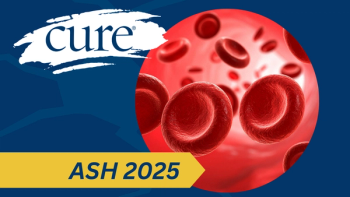Among previously untreated patients with advanced gastrointestinal stromal tumors (GIST), treatment with Gleevec (imatinib) and Mektovi (binimetinib) resulted in robust and sustained clinical benefits regarding progression and survival, researchers have reported.
Ten-year follow-up analysis of the combination administered in a single-center, single-arm phase 2 study was presented at the 2025 American Society of Clinical Oncology Annual Meeting and published in the Journal of Clinical Oncology.
Among the 42 patients treated in the efficacy population, the best objective response rate was 69%. The median progression-free survival was 36.7 months, the median overall survival was 92.5 months and the median disease-specific survival was 93.2 months.
“The 10-year follow-up analysis of the [Mektovi] plus [Gleevec] combination phase 2 study demonstrated robust and sustained clinical benefit in [progression-free survival], [overall survival] and [disease-specific survival] for patients with treatment-naïve advanced GIST,” researchers from Memorial Sloan Kettering Cancer Center in New York concluded in a poster presentation of the data at the meeting.
GIST Trial 13-162 is currently active, according to its listing on clinicaltrials.gov. With an enrollment of 75 patients, the trial is estimated to be completed in November 2025, according to the listing.
Gleevec, as defined by the National Cancer Institute, blocks certain proteins tied to tumor cell growth, meaning the Gleevec may help keep cancer cells from growing and instead kill them. Notably, the agent is a type of drug known as a tyrosine kinase inhibitor.
Mektovi, according to the National Cancer Institute, blocks proteins different proteins which are also tied to tumor cell growth, and may help keep cancer cells from growing; it is a type of kinase inhibitor.
Diving Deeper into Research Data, Methods and GIST
Adult patients with unresectable or metastatic and previously untreated GISTS received 400 milligrams daily of Gleevec and 30 milligrams twice daily of Mektovi in 28-day cycles when enrolled on the trial. The treatment combination’s clinical efficacy was evaluated using serial imaging every eight to 12 weeks, with response criteria including objective response rate, progression-free survival, overall survival and disease-specific survival.
Glossary
Objective response rate: patients who responded partially or completely to treatment.
Progression-free survival: the time a patient lives without their disease spreading or worsening.
Overall survival: the time a patient lives, regardless of disease status.
Disease-specific survival: patients who do not die from a specific disease.
Asymptomatic creatinine phosphokinase elevation: elevated levels of creatine kinase in the blood without other symptoms.
Hypophosphatemia: low levels of phosphate in the blood.
Neutrophil: a type of white blood cell.
Maculopapular rash: a rash characterized by flat and elevated lesions.
Anemia: low levels of healthy red blood cells.
Furthermore, 23 out of 42 patients eventually underwent surgery, with seven patients being considered to be exceptional responders, with at least 90% significant pathological responses, and who remained with no evidence of disease after surgery for at least 45 months.
Previous findings from the study, published in 2022 in the Journal of Clinical Oncology, found that there were no unexpected toxicities. Side effects that were noted though included grade 3 (severe) and 4 (life-threatening) toxicity like asymptomatic creatinine phosphokinase elevation (79.1%), hypophosphatemia (14%), neutrophil decrease (9.3%), maculopapular rash (7%) and anemia (7%).
GISTs, as explained by the American Cancer Society, are uncommon cancers that begin in special cells in the wall of a patient’s gastrointestinal tract, which is also known as the GI or digestive tract.
It is unknown how many people receive diagnoses of GISTs each year, the American Cancer Society, and current estimates for the total number of cases diagnosed every year in the United States ranges from approximately 4,000 to about 6,000. Approximately 60% of such tumors start in the stomach, while approximately 35% begin in a patient’s small intestine, and the majority of the rest can be found in the esophagus, colon and rectum. However, some may develop in the abdomen outside of the GI tract.
While GISTS are most commonly found in patients older than the age of 50 and they rarely occur in people younger than the age 40, they can potentially develop in people of any age, the American Cancer Society noted.
References
- “Long-term outcomes in GIST Trial 13-162: Phase II study of imatinib in combination with binimetinib in untreated patients with advanced gastrointestinal stromal tumor (GIST)” by Dr. Yudi Bao et al., Journal of Clinical Oncology.
- “MEK162 in Combination With Imatinib Mesylate in Patients With Untreated Advanced Gastrointestinal Stromal Tumor (GIST),” clinicaltrials.gov, https://www.clinicaltrials.gov/study/NCT01991379
- “Gleevec,” National Cancer Institute, https://www.cancer.gov/publications/dictionaries/cancer-terms/def/gleevec
- “Mektovi,” National Cancer Instittue, https://www.cancer.gov/publications/dictionaries/cancer-terms/def/mektovi
- “Phase II Trial of Imatinib Plus Binimetinib in Patients With Treatment-Naive Advanced Gastrointestinal Stromal Tumor” by Dr. Ping Chi et al., Journal of Clinical Oncology.
- “Gastrointestinal Stromal Tumor (GIST),” American Cancer Society, https://www.cancer.org/cancer/types/gastrointestinal-stromal-tumor.html
For more news on cancer updates, research and education, don’t forget to subscribe to CURE®’s newsletters here.






